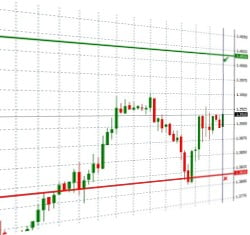 Risk to award ratio is often used when evaluating the risk of a Forex trading strategy, be it manual or automated. It’s one simple number that can tell a lot about a strategy. In fact, this number alone can tell a good strategy from a bad one. So what is the Risk to Award ratio and how do we use it?
Risk to award ratio is often used when evaluating the risk of a Forex trading strategy, be it manual or automated. It’s one simple number that can tell a lot about a strategy. In fact, this number alone can tell a good strategy from a bad one. So what is the Risk to Award ratio and how do we use it?
The ratio is calculated by dividing the risk you take per trade in pips by the award you expect to make, in other words you can calculate it by dividing your Stop Loss by Take Profit. For example, let’s say the current EURUSD pair quote is 1.3945 and I want to go short. I will open a trade with a Take Profit at 1.3845 – that makes a target of 100 pips, and I’ll place a Stop Loss at 1.4045 which is also 100 pips. That makes the risk to award ratio of 1.
Incidentally 1 is considered the highest ratio that a good strategy should have. Allow me to explain why. What does the ratio say in simple English? It tells how many winning trades you have to make to cover one loss. A ratio of 1 means you only have to make one good trade to cover your last loss. Or vise versa, one loss will only scratch your one last winning trade (provided they have the same target).
So a good strategy will not risk more than one winning trade can recoup. If the risk to award ratio is higher than 1, it is very possible that the strategy will fail in the long run. However, it doesn’t mean that a strategy with the ratio of less than one will necessarily be a good strategy.
There are more metrics of risk management and even if they all look good, that doesn’t make a strategy perfect. A good risk management, however, is an irreplaceable tool to ensure a successful Forex trading over a long period of time.